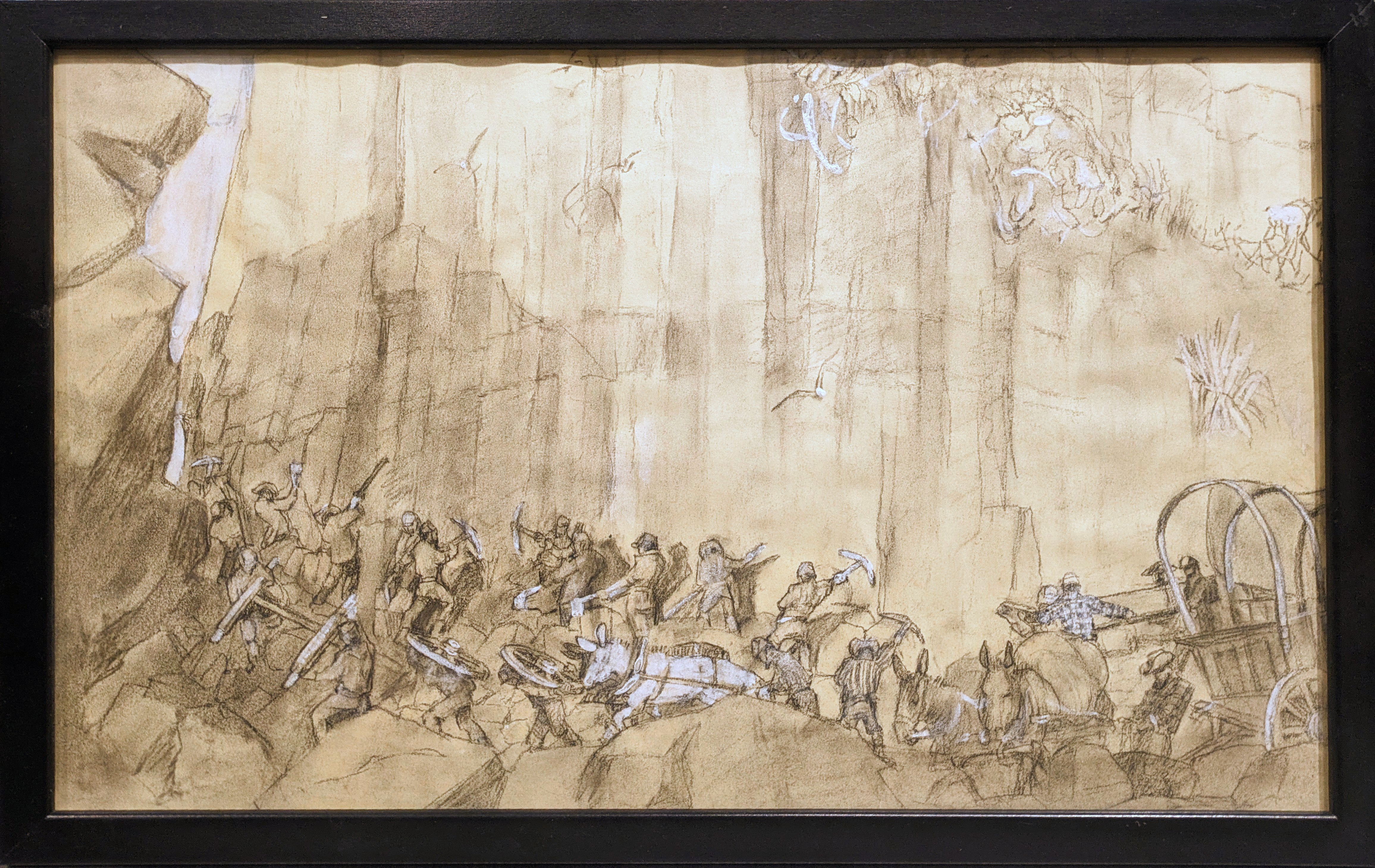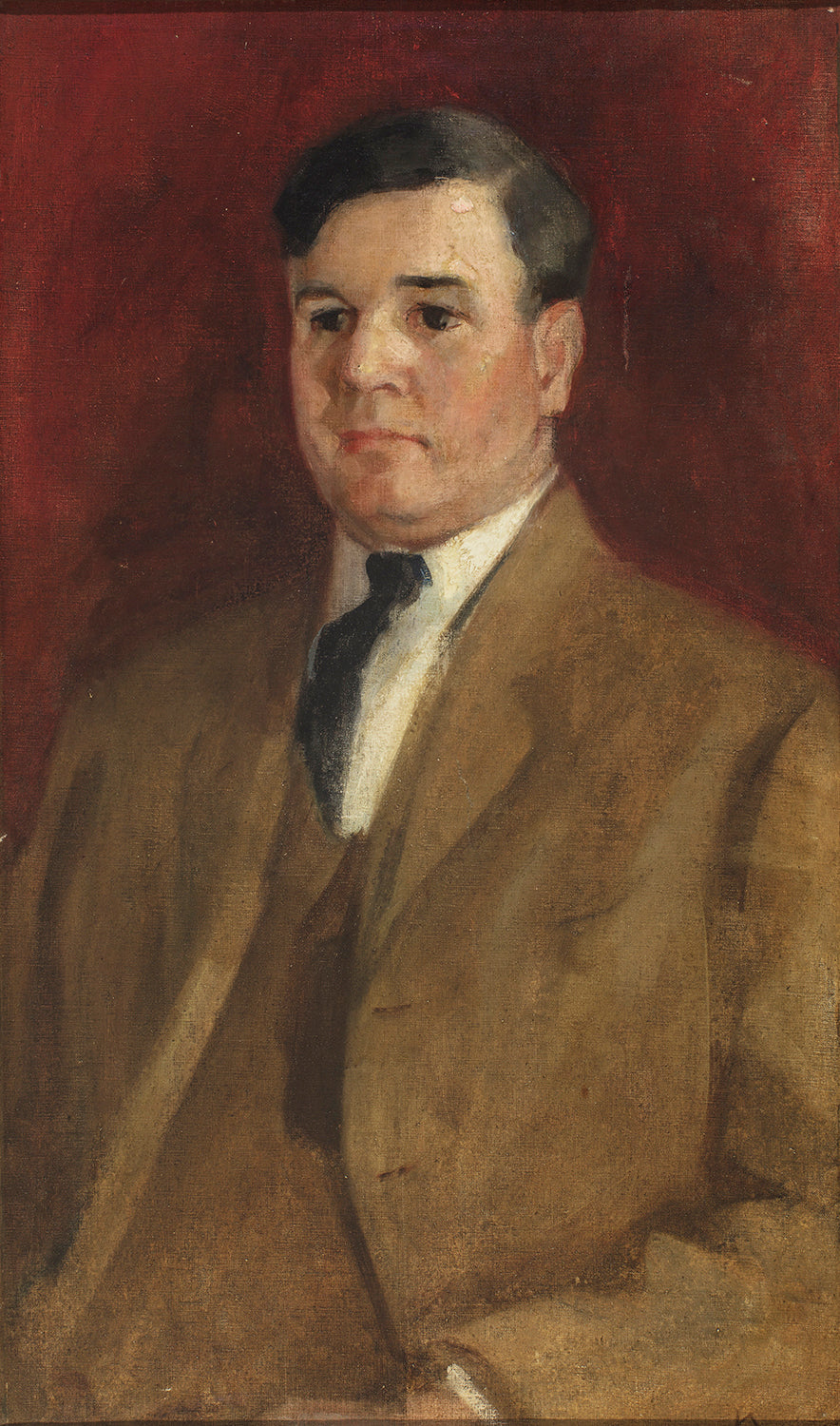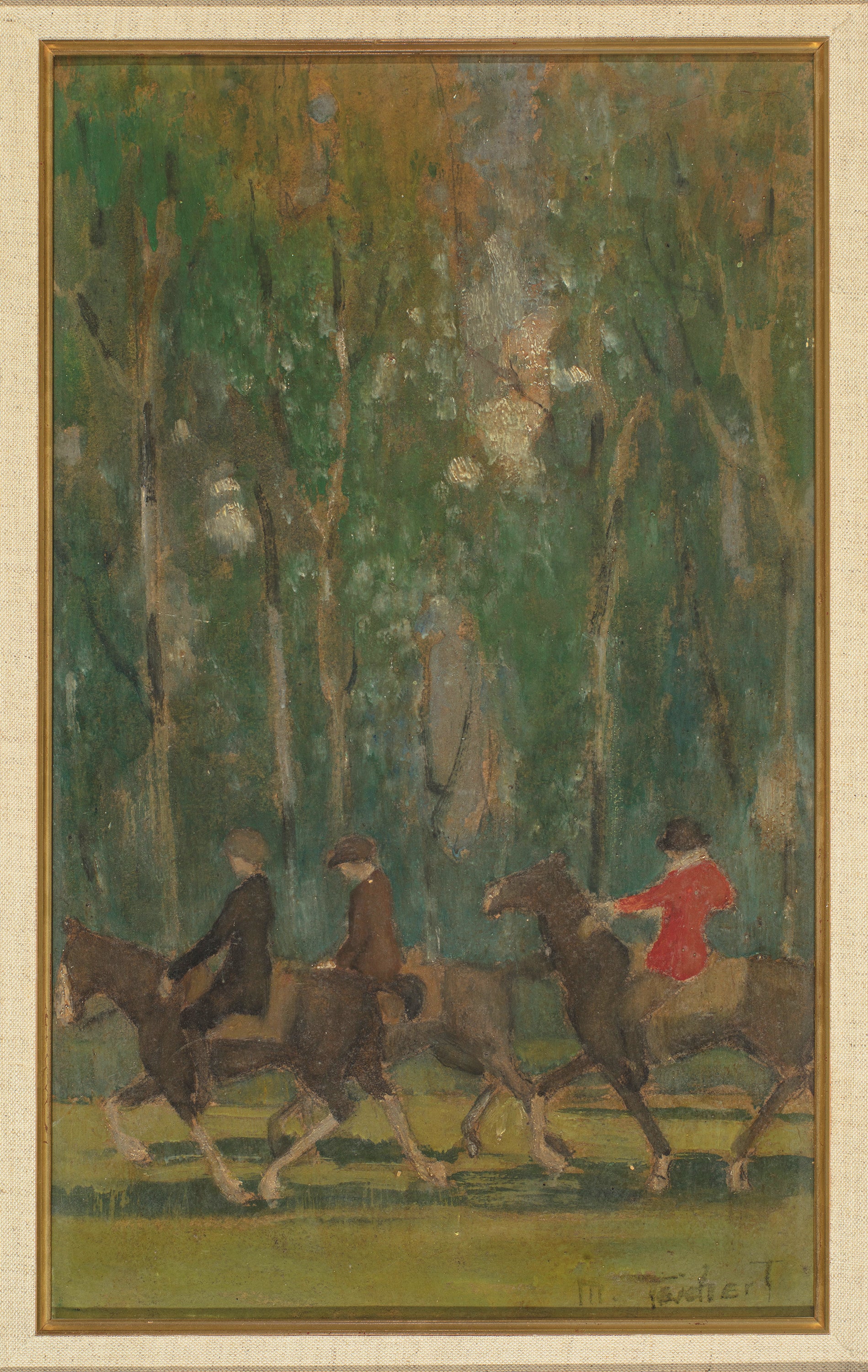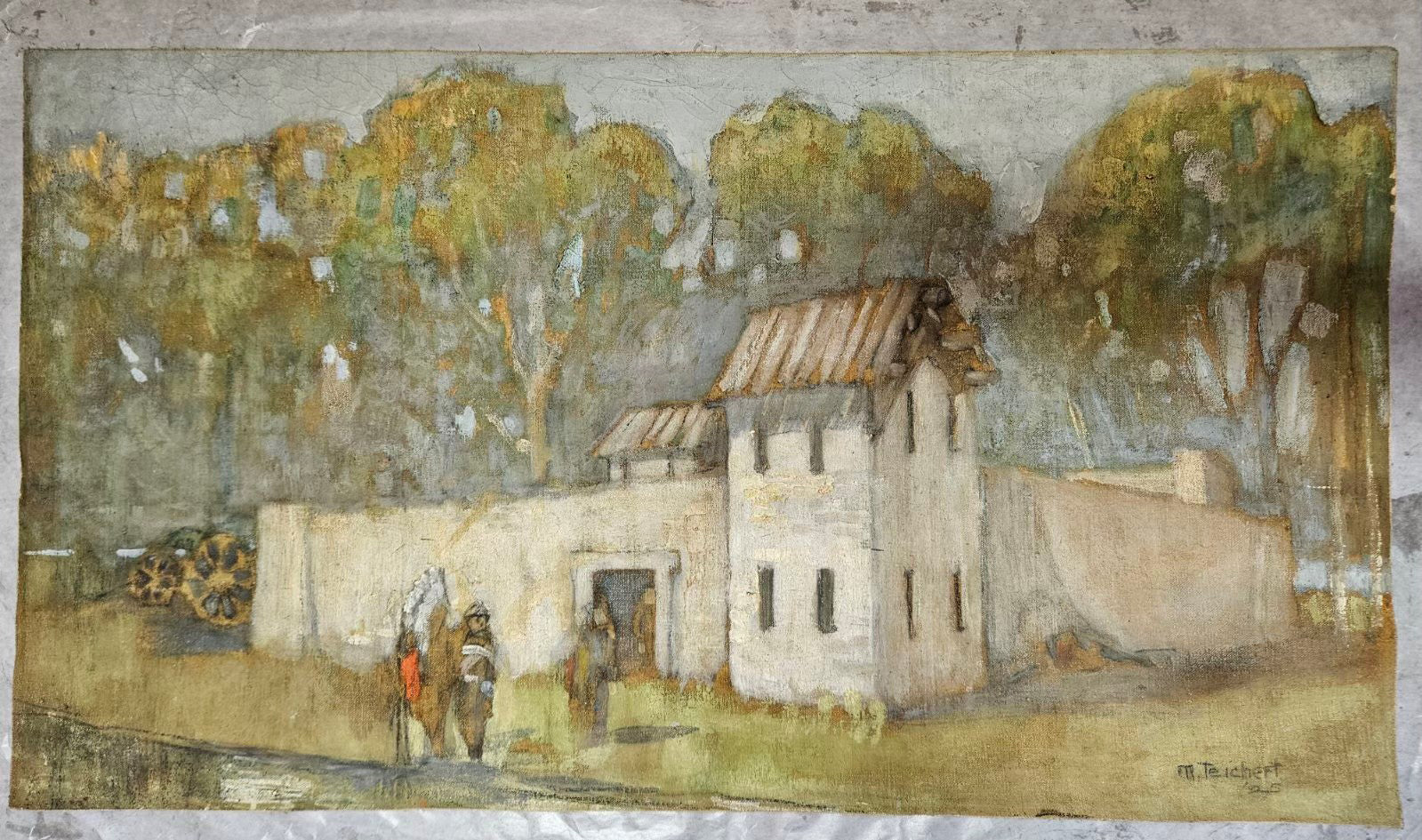Pacific at Last -The Mormon Battalion Original Artwork
18 X 11.25 white paint pencil and charcoal
Minerva captured not only the westward trek of Mormon pioneer wagons and handcarts but turned her eye to the history of the Mormon Battalion as well. This exquisite drawing underscores Minerva’s skill in the depiction of the human figure. Look at how each of the figures simply “feels right,” standing on rubble and swinging a pick or axe.
The image itself seems to come directly from this snippet of the 1847 report, to his U.S. Army superiors summarizing the battalion’s march from Council Bluffs, Iowa to San Diego, California submitted by its commander, Lt. Col. P. St. George Cooke:
“…next day, I encountered extraordinary obstacles to a wagon road, and actually hewed a passage, with axes, through a chasm of solid rock, which lacked a foot of being as wide as the wagons. Two of them were taken through in pieces, whilst the work was going on. So much was I retarded that I encamped, at dark, on the mountain slope...”








